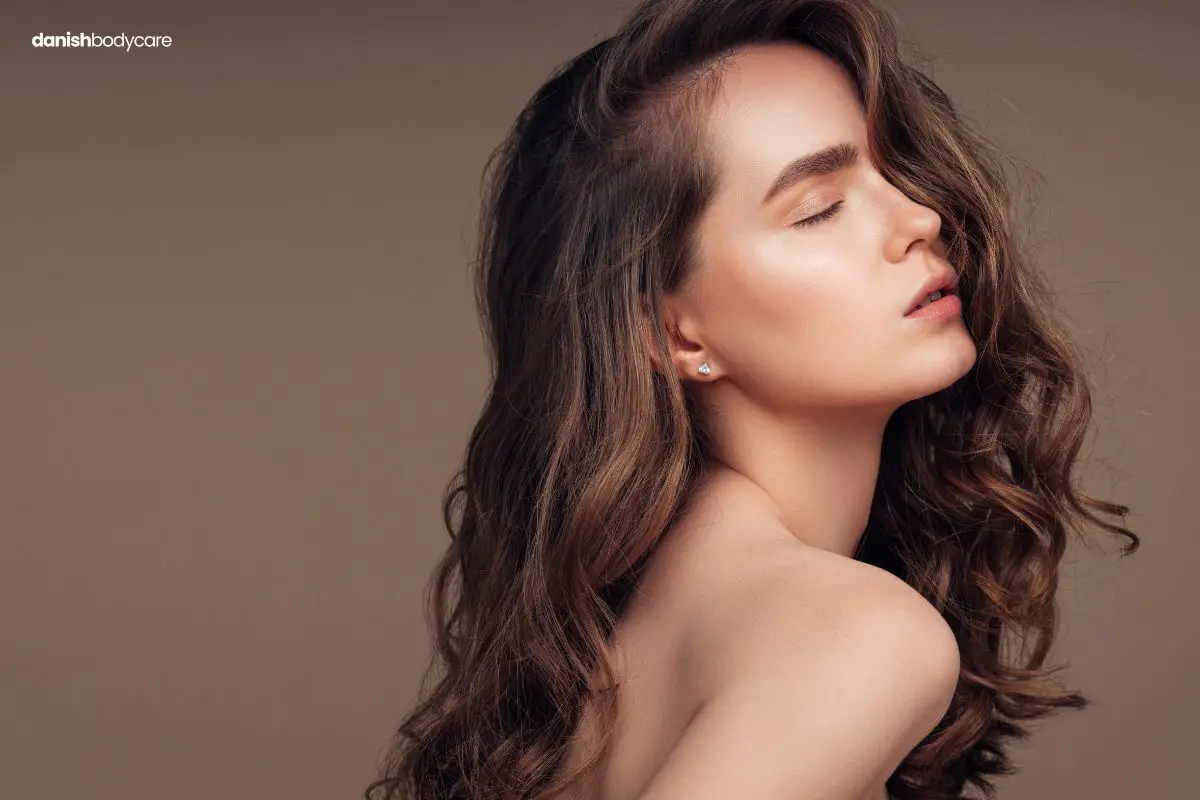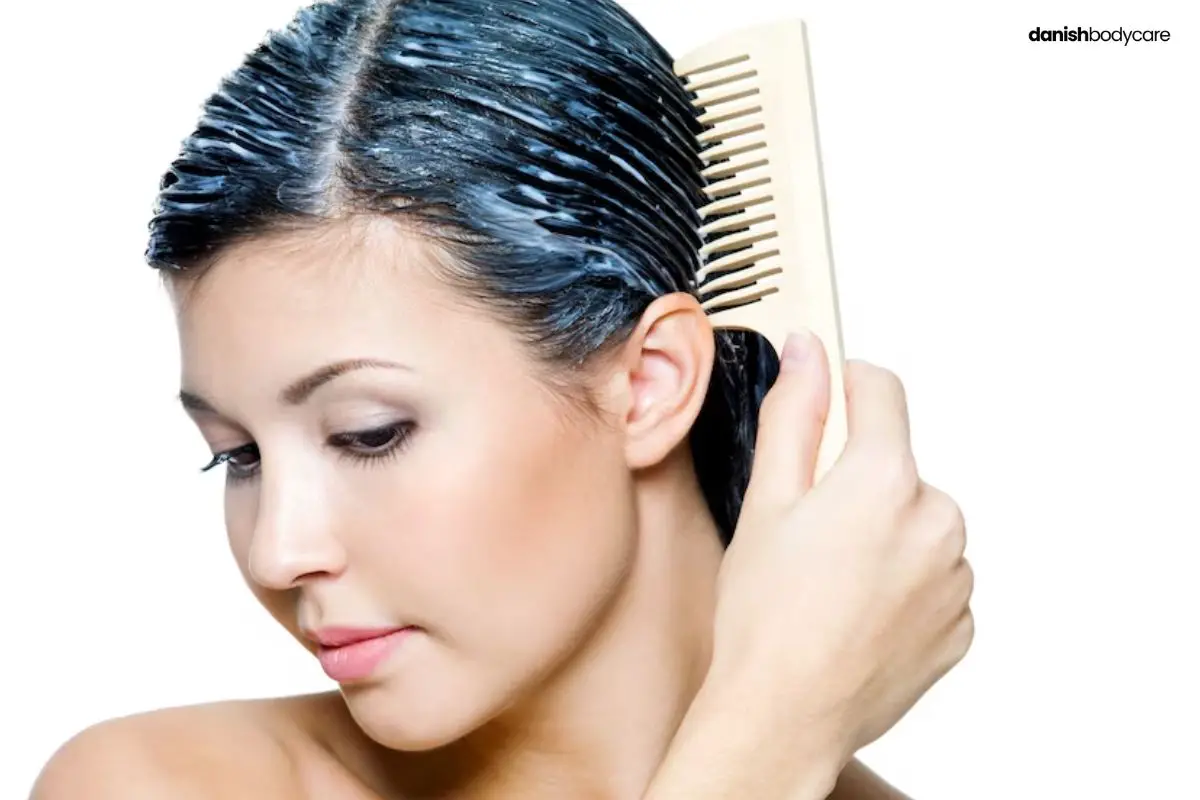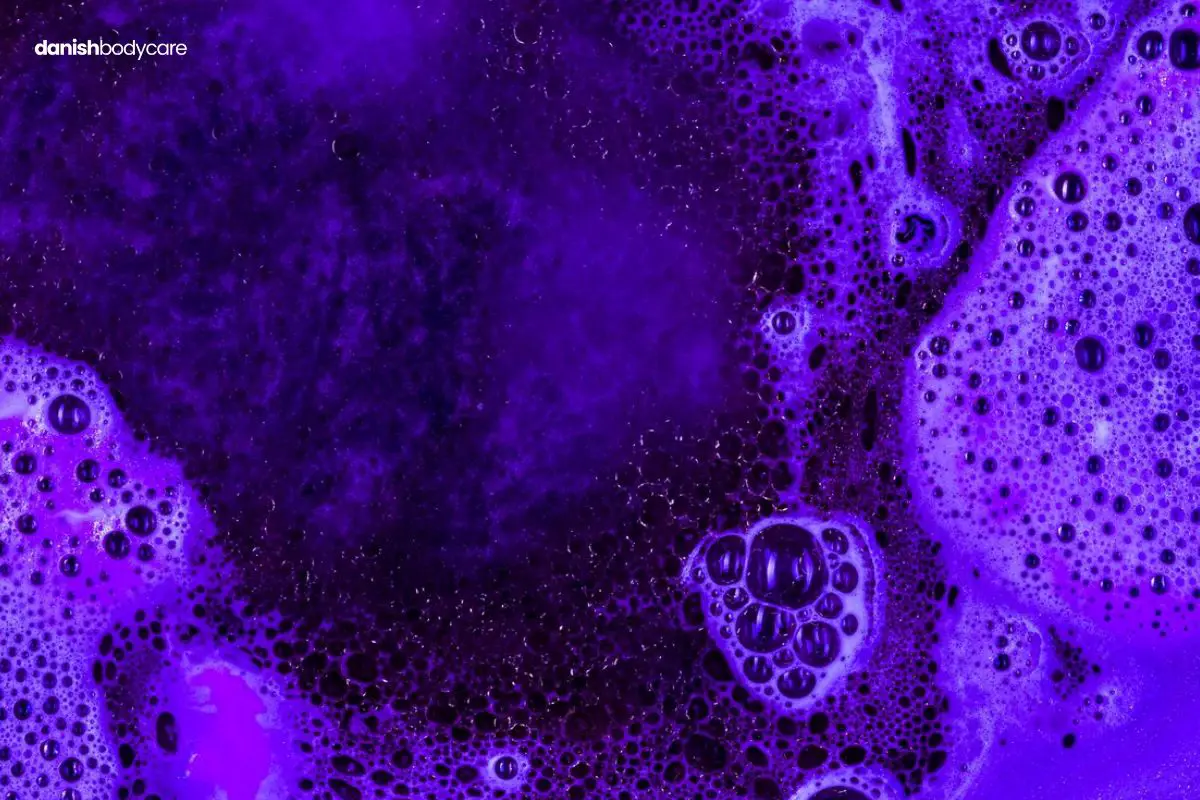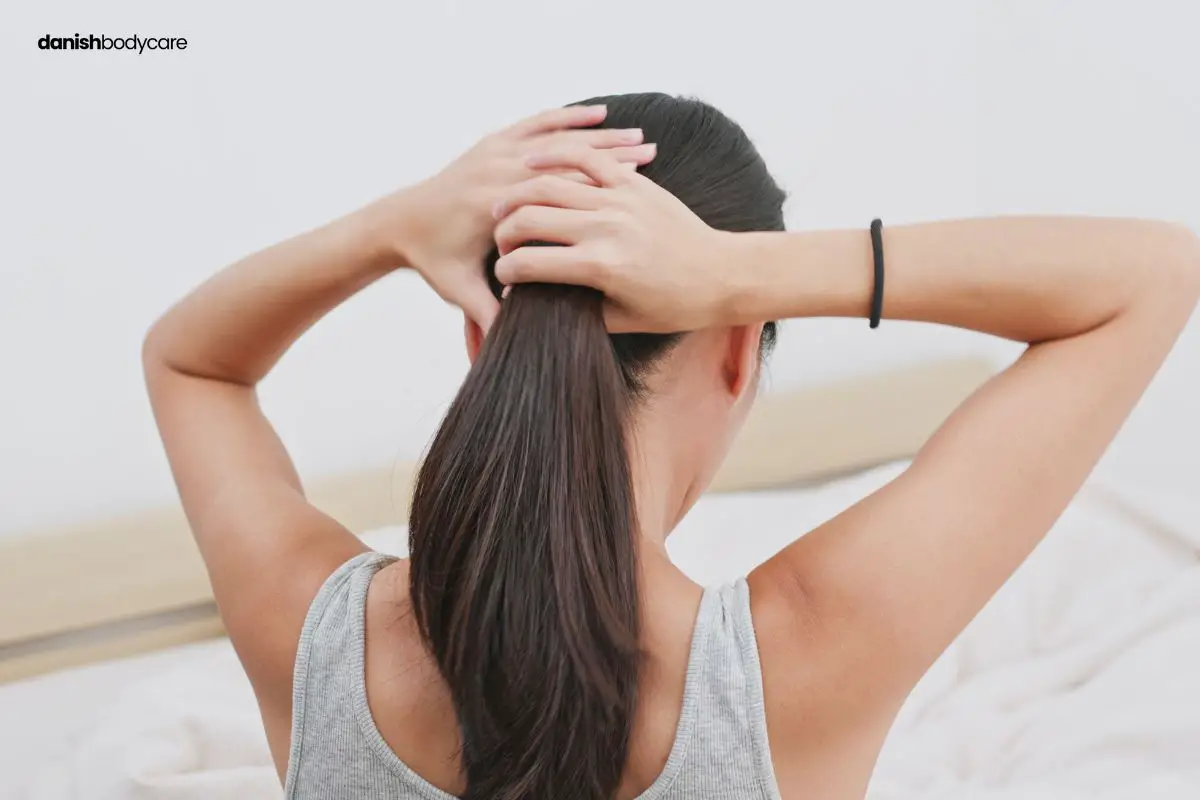Bleaching your hair can be fun, but it can also be damaging to your hair. If you’ve bleached your hair and want to dye it brown, it’s important to do it the right way.
Did you know that using hot water can cause your hair to become dry and brittle? This can make it difficult for the dye to stick.
By following the right steps and using the right products, you can dye your hair brown without causing damage.
Can You Dye Your Hair Brown After Bleaching?

Yes, you can dye your hair brown after bleaching it. But, there are important steps to follow to ensure the best results and to avoid damaging your hair.
Preparations Before Dyeing
Follow these set of preparations before dyeing your hair brown:
- Gather your materials
- Read and follow hair dye packaging instructions
- Clean your hair with gentle shampoo
- Moisturize using hair conditioner
- Put hand gloves for protection
- Part your hair into several sections
1. Gather Your Materials
Gather all the necessary supplies. You can read more about what you need later.
2. Read and Follow Hair Dye Packaging Instructions
After you’ve gotten your supplies, read the instructions on the hair dye packaging. Make sure that you follow each of the recommended steps. This way, you can avoid mishaps.
3. Clean Your Hair With Gentle Shampoo
Cleanse your hair with a gentle shampoo. This way, you avoid adding harsh chemicals that can further damage your bleached hair.
Also, don’t use a toning shampoo straight after bleaching. It may cause more damage to the hair’s structure.
4. Moisturize Using Hair Conditioner
After shampooing, use a moisturizing conditioner to nourish your hair and scalp. Do a thorough rinse to remove all of the conditioner and pat your hair dry using a towel.
5. Put Hand Gloves for Protection
Put on gloves to protect your hands from staining during the dyeing process. Drape the old towel around your shoulders to catch any drips.
6. Part Your Hair into Several Sections
Begin by parting your hair into several sections. Make sure to keep these manageable for easy application. Use clips to hold the strands to secure your hair in their respective sections.
Select the Right Shade of Brown

When dyeing your hair, you want to get the shade right. Here’s how to do that:
- Choose 2-3 shades lighter
- Consider your natural hair color
- Choose a dye that has a conditioning agents
Choose 2-3 Shades Lighter
Choose a hair dye color that is 2-3 shades lighter than the color you want. This will balance out the darkening that might happen when you dye your hair, since it has undergone a bleaching process.
Consider Your Natural Hair Color
Pick a brown shade that complements your complexion. If you have a warm skin tone, go for golden or caramel shades of brown. If you have a cool skin tone, choose ash or neutral tones.
Choose a Dye that has Conditioning Agents
Once you’ve found the perfect shade, choose a dye that includes conditioning agents. This will help nourish and protect your hair.
Materials and Tools to Use
Get the perfect brown hair color with these essential materials and tools. Here’s what you’ll need to dye your hair brown:
Materials to Use
- Protein filler
- Hair dye
- Developer
Protein filler: Protein filler evens out the porosity of your bleached hair before applying the dye. It prevents patchiness and ensures a more even color.
Hair dye: Choose a hair dye color that is 2-3 shades lighter than the color you want. Bleached hair absorbs more color than healthy hair. Use demi-permanent or semi-permanent dye.
| Type of Hair Dye | Benefits for Bleached Hair |
| Demi-permanent | help you achieve the specific shade you want without the brassy warmth. |
| Semi-permanent | healthier option if your bleached hair shows signs of damage. |
Developer: If you use a demi-permanent dye, you’ll need a developer with a lower volume (usually 10 or 20 volume). This will avoid further damage to your hair during the coloring process.
Tools to Prepare
- Mixing bowl
- Applicator brush
- Hair clips
- Gloves
- Wide-tooth comb
8 Steps to Dye Bleached Hair Brown
Follow these step-by-step guide to help you achieve beautiful brown hair after bleaching:
- Gentle combing
- Apply the protein filler
- Choose hair dye color 2-3 shades lighter
- Mix the dye
- Wear gloves and apply the dye
- Wait for the color to develop
- Rinse and condition
- Gentle towel drying
Step 1. Gentle Combing
After preparing your hair, comb it to detangle and divide it into sections. Creating four parts will help you apply the dye more easily.
Step 2. Apply the Protein Filler
Before coloring your hair, apply a protein filler first. This ensures a more even color distribution.
Allow the protein filler to penetrate your hair for the time indicated on the product’s label. Rinse it out before proceeding.
Step 3. Choose Hair Dye Color 2-3 Shades Lighter
Choose a hair dye color that is 2-3 shades lighter than the color you want. Bleached hair is more porous, so it absorbs more color. It may end up looking much darker than intended.
Step 4. Mix the Dye
Mix the color with the developer according to the instructions on the package. Stir until the consistency is smooth and free of lumps.
Step 5. Wear Gloves and Apply the Dye
Wear gloves, and start applying the hair dye to each section. Make sure to cover your hair and start from the roots, working your way down to the tips.
Step 6. Wait for the Color to Develop
Your hair dye’s instructions will provide an estimated time for the color to develop. Keep an eye on your hair color and make sure the dye doesn’t sit longer than recommended.
Step 7. Rinse and Condition
Once the processing time is up, rinse your hair with lukewarm water until the water runs clear. Apply a color-safe conditioner and let it sit for a few minutes, then rinse it out.
Step 8. Gentle Towel Drying
Finally, towel dry your hair before styling it as usual.
Remember that it might take a few days for the color to settle. Avoid using heat-styling tools for the first couple of days to maintain your new brown hair.
How to Take Care of Your Dyed Brown Hair
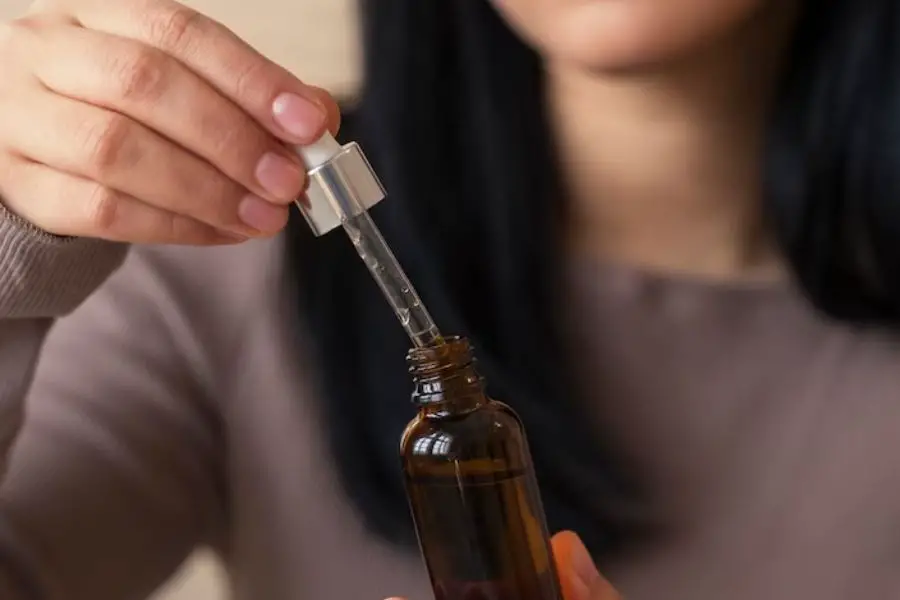
Maintain the vibrance of your brown hair by following these haircare pointers:
- The 48 hours rule
- Wash hair every other day
- Rinse with cold water
- Use color-protecting shampoo and conditioner
- Apply deep conditioning weekly
- Use leave-in conditioners and hair oils
- Put on heat protectants
- Gentle detangling with a wide-tooth comb
- Spray with UV protection sprays and serums
- Practice regular trims for strong ends
The 48 Hours Rule
After dyeing your hair, wait at least 48 hours before washing it. This allows the color to set in and reduces the risk of fading.
Wash Hair Every Other Day
Wash your brown hair every other day or less, as frequent washing can strip away color. If needed, use a dry shampoo between washes to absorb excess oil.
Rinse with Cold Water
Whenever you wash your hair, rinse with cold or lukewarm water instead of warm water. Cold water helps to seal the hair cuticles and preserve the hair color.
Use Color-Protecting Shampoo and Conditioner
Invest in a color-protecting shampoo and conditioner to keep your brown hair vibrant, such as blue shampoo for brown hair.
Apply Deep Conditioning Weekly
Use deep conditioning treatments like hair masks or coconut oil. This helps restore moisture to your hair. Apply a deep conditioner to your hair once a week.
Use Leave-In Conditioners and Hair Oils
Leave-in conditioners and hair oils are good for your hair. Use argan oil or jojoba oil they provide extra protection for your brown hair. Apply a small amount after washing, while your hair is still damp.
Put on Heat Protectants
Before using heat styling tools, apply a heat protectant. It will prevent damage and color fading. It’s better to air dry your hair whenever possible.
Gentle Detangling with a Wide-Tooth Comb
Use a wide-tooth comb to detangle your hair after washing, reducing the risk of breakage. Start at the ends of your hair and work your way up.
Spray With UV Protection Sprays and Serums
UV rays from the sun can cause your brown hair to fade or become brassy. Protect your hair by using sprays and serums with UV protection during sun exposure.
Practice Regular Trims for Strong Ends
Regular trims help to maintain healthy hair and prevent split ends. Aim to trim your hair every six to eight weeks for strong ends and vibrant colors.
Common Issues of Dyeing Bleached Hair Brown
You have to be careful when dyeing your hair brown after bleaching. Below are some common issues you might come across:
- Hair turning green in color
- Fade brown hair color
- Unexpected color outcomes
- Allergic reaction to hair dye
Hair Turning Green in Color
This can happen due to the combination of a hair dye with a cool undertone and the residual bleach in your hair. Try using a hair dye with warm undertones like caramel or chocolate brown.
Fade Brown Hair Color
Bleached hair is porous, which may cause the color to fade more than on unbleached hair. To prevent the fading, consider using a blue shampoo for brown hair. It can help neutralize any brassiness and maintain the color vibrancy.
Unexpected Color Outcomes
If you notice that your hair turns out darker or redder than expected, even if you’ve chosen a lighter shade of dye. This may be because of the porosity of bleached hair. Bleached hair absorbs more color than healthy hair.
If this happens, you can use a red protein filler before dyeing to ensure a more even distribution of color.
Allergic Reaction to Hair Dye
Bleached hair may be more sensitive to the chemicals in dye products. Be sure to do a patch test before applying the dye to your entire head. This will help you identify any potential adverse reactions beforehand.
3 Ways to Fix Uneven Coloration
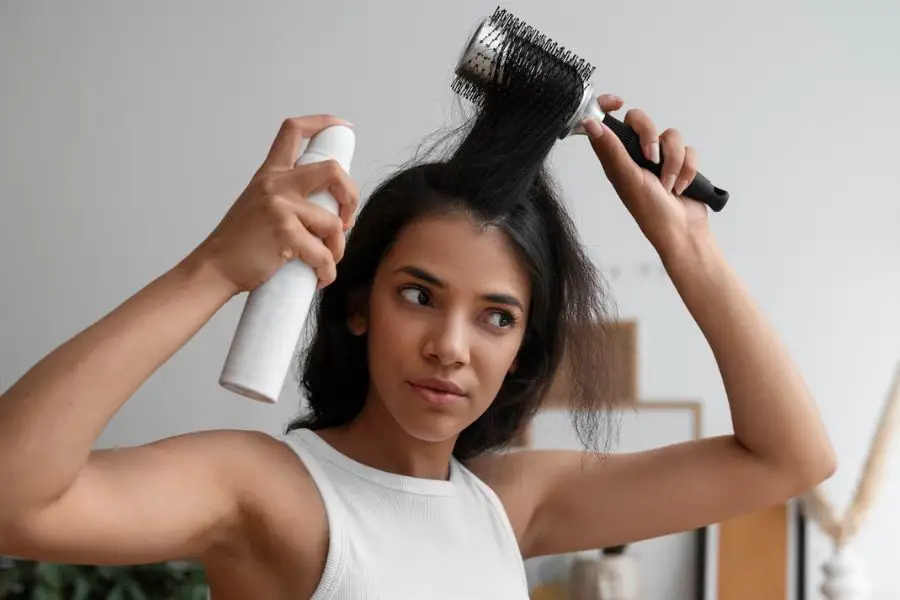
Fix uneven coloration in your hair after dyeing it brown by following these methods and tips:
- Use color-blending product
- Tone your hair
- Use color correction treatment
Use Color-Blending Product
Color-blending products can help even out your roots and the rest of your hair. You can apply tinted dry shampoos over your roots. It will help blend off-color areas and give a more uniform appearance
Tone Your Hair
Put a temporary tone on your hair a few shades darker. It can help conceal unwanted undertones like orange, yellow, or green. While doing this, make sure to use a good moisturizing hair mask to replenish your strands.
Use Color Correction Treatment
Some cases might need a color correction treatment from a professional hairstylist. They have experience in dealing with uneven coloration.
Common Tips from Hairstylists
Professional hair stylists are experts in the right hair dyes, processing times, and techniques. Here are some of their common tips:
- Have a fresh haircut
- Be patient with the processing time
- Schedule regular touch-ups
Have a Fresh Haircut
Before dyeing your hair, ensure you get a haircut to remove any damaged or split ends. This will help your new color look more vibrant and healthy.
Be Patient with the Processing Time
During the coloring process, it’s important to be patient. Allow the dye enough to process to achieve the best results. Leaving the dye on too long or not long enough can result in an uneven or unwanted color.
Schedule Regular Touch-Ups
Schedule regular touch-ups to maintain your brown hair color. As your hair grows, the new roots may show a color difference, and your bleached hair may fade over time.
Note: Follow the recommended maintenance by your hairstylist.
Frequently Asked Questions
Is it OK to put brown dye over bleached hair?
Yes, it is generally safe to put brown dye over bleached hair. But, it’s recommended to give your hair at least a day or two before dyeing. This will ensure better results and lessen potential damage.
What happens if you put brown dye over bleach?
When you put brown dye over bleached hair, your hair color changes from blonde to brown. But, make sure to choose a hair dye that is 2-3 shades lighter than your desired color. Bleached hair tends to absorb more color, resulting in a darker shade than intended.
Can I use box dye to transition from blonde to brown?
Yes, you can use box dye to transition from blonde to brown. Take your time and follow the instructions on the box for the best results.
What’s the best method to dye bleached hair brown at home?
The best method to dye bleached hair brown at home involves using a protein filler and the right shade of hair dye. Start by applying a protein filler to even out the hair’s porosity. Then choose a dye 2-3 shades lighter than your desired color.

